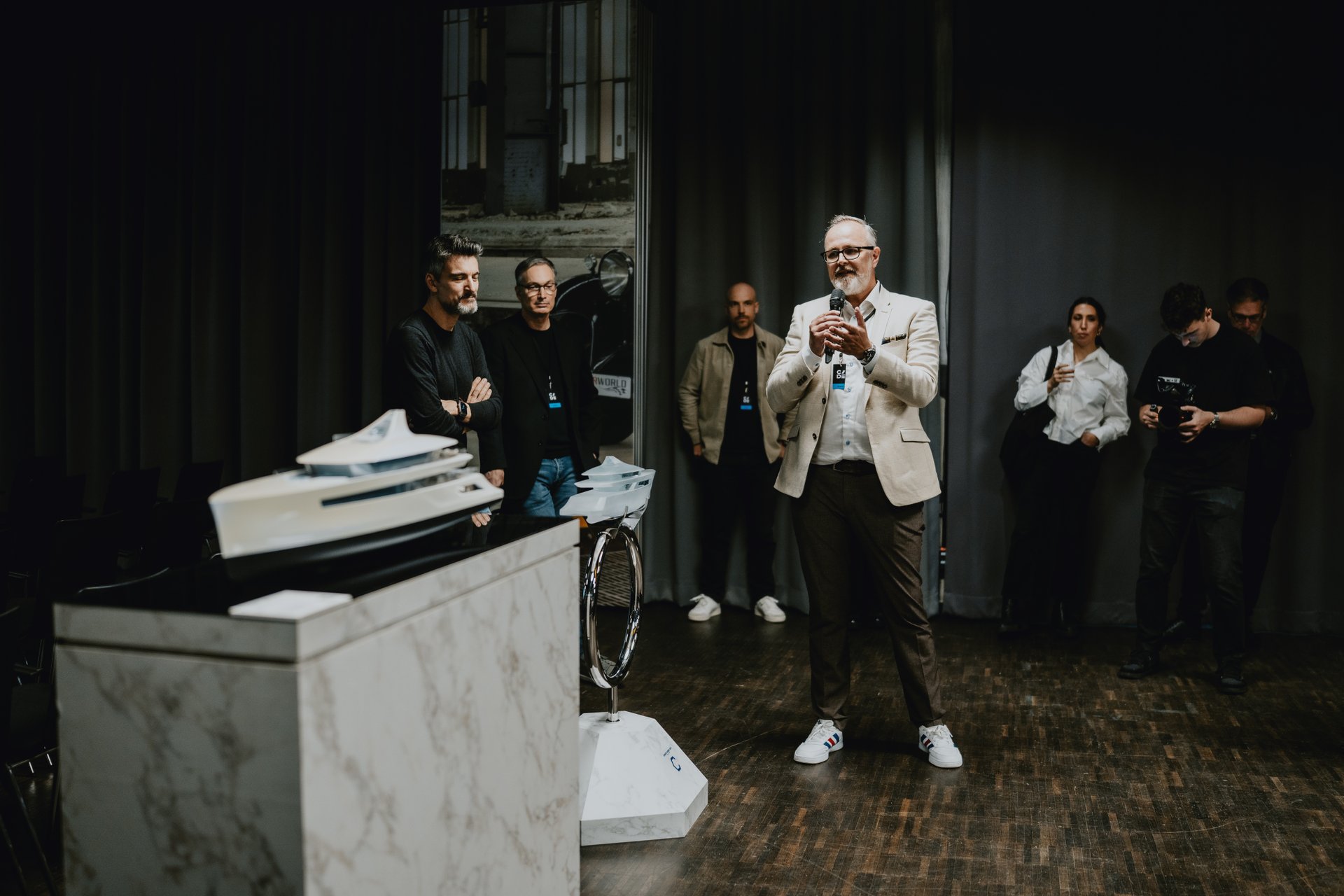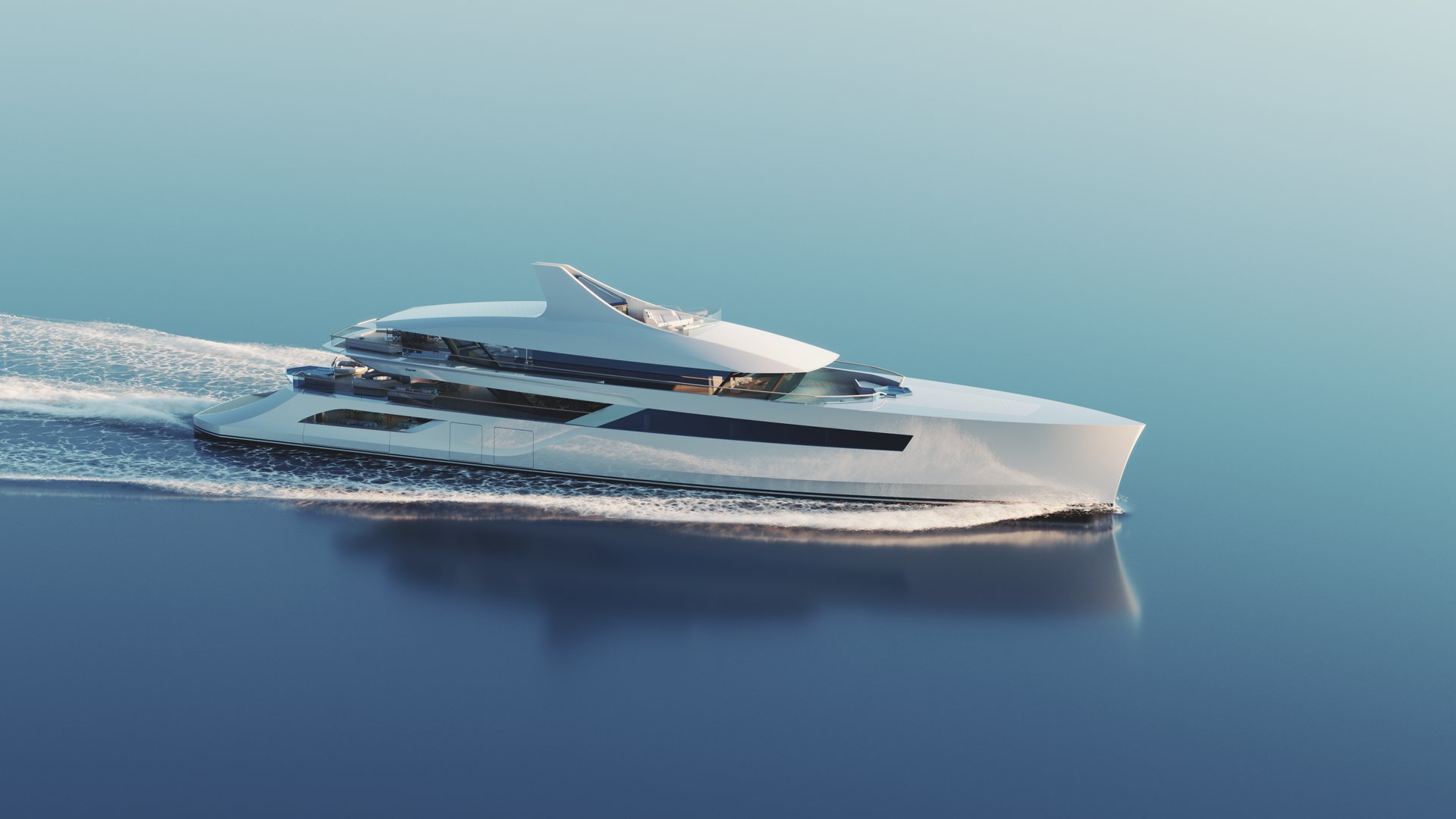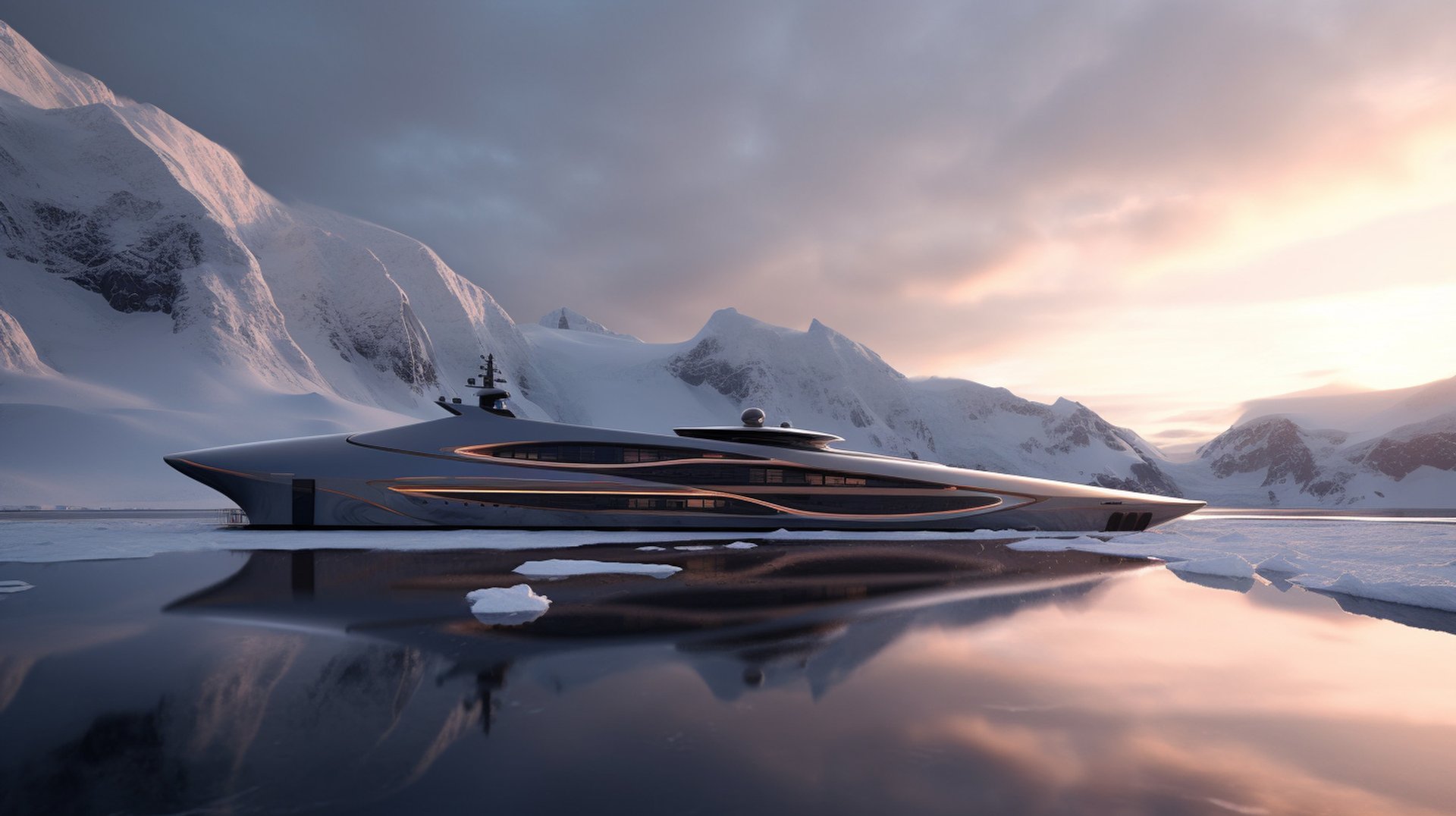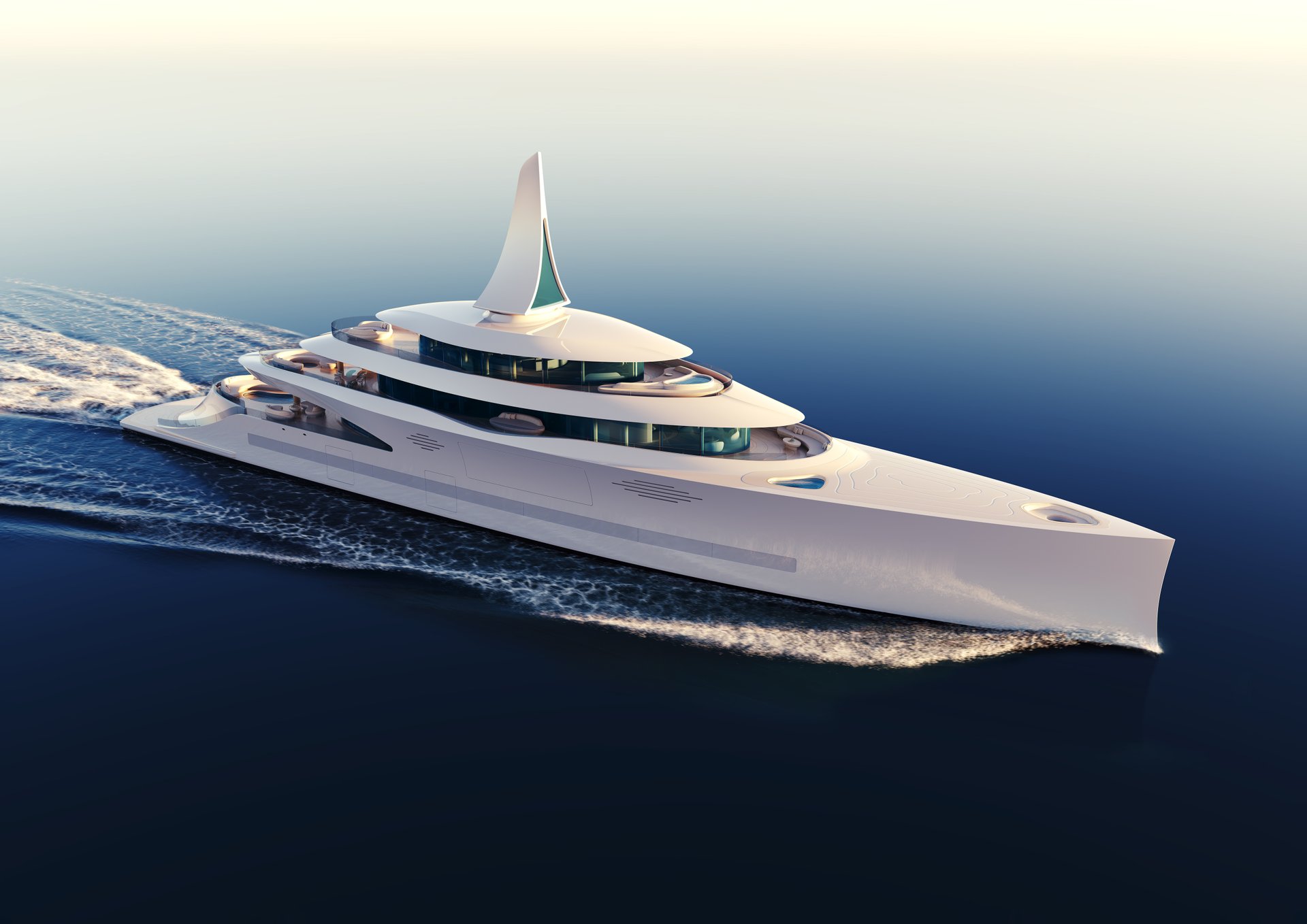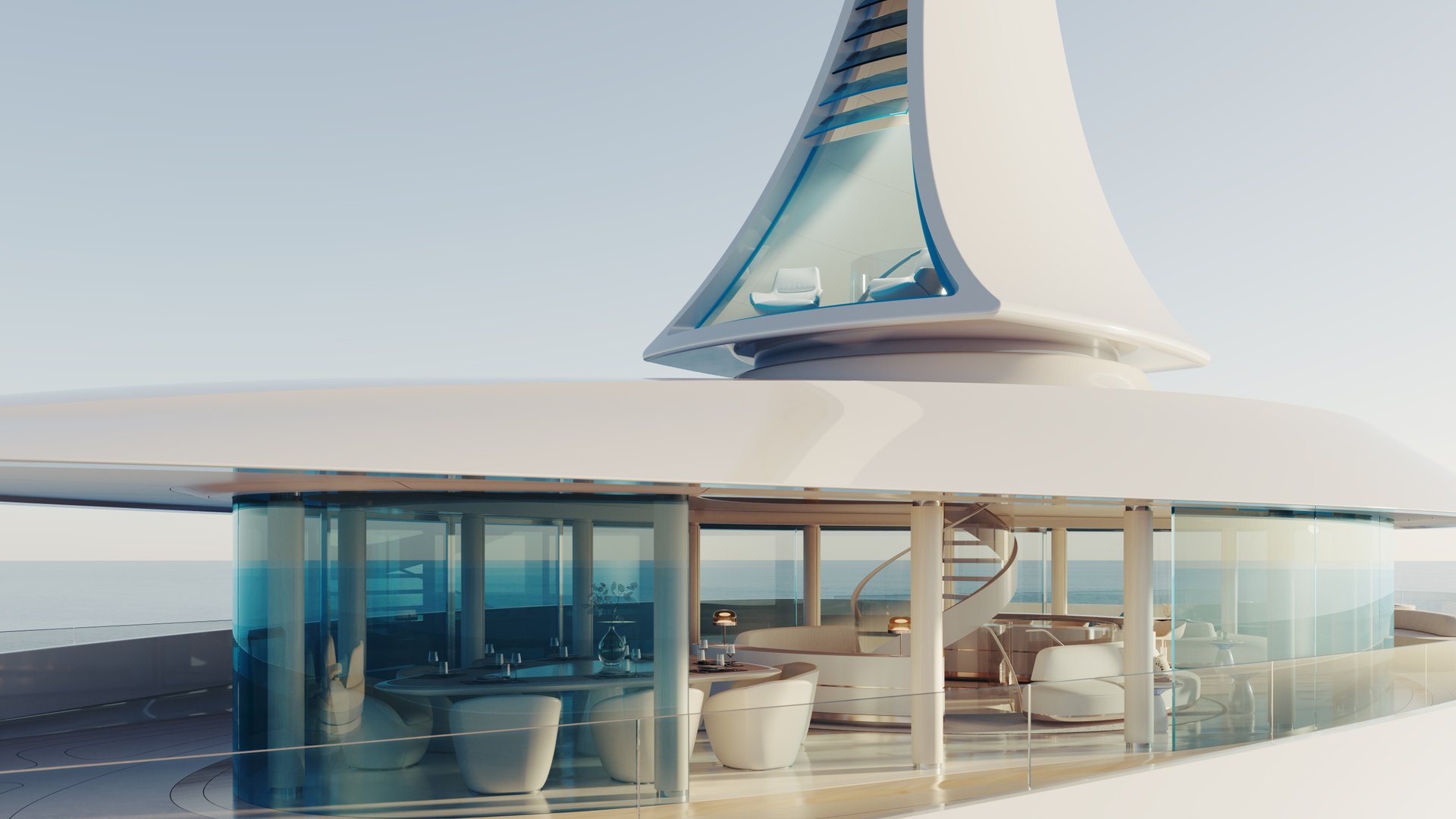When I was invited to speak at the Car // Design Event last May in Munich, I found myself stepping into what I can only describe as “a design candy store.” Surrounded by concept cars and representatives from global giants like Kia, Hyundai, Mazda, Mercedez-Benz and Volkswagen, as well as Pagani and Pininfarina, I was struck by the intense passion and methodical process that underpins the automotive world. But what really stood out was just how different the worlds of supercar and superyacht design truly are – despite their surface similarities.
At first glance, both industries seem to chase the same ideals: beauty, performance and luxury. Automotive-nautical crossovers aren’t new. Riva’s collaboration with Ferrari in the early 1990s produced a scarlet speedster that turned heads everywhere. More recent collaborations between yacht builders and car brands – Mercedes, Aston Martin, Lamborghini, Porsche, even Bugatti – have resulted in sleek, high-speed designs that resemble sports cars on water. Yet most of these relationships have been skin-deep based on badging and a few aesthetic cues. The real conversation is deeper – one about process, proportion and identity.
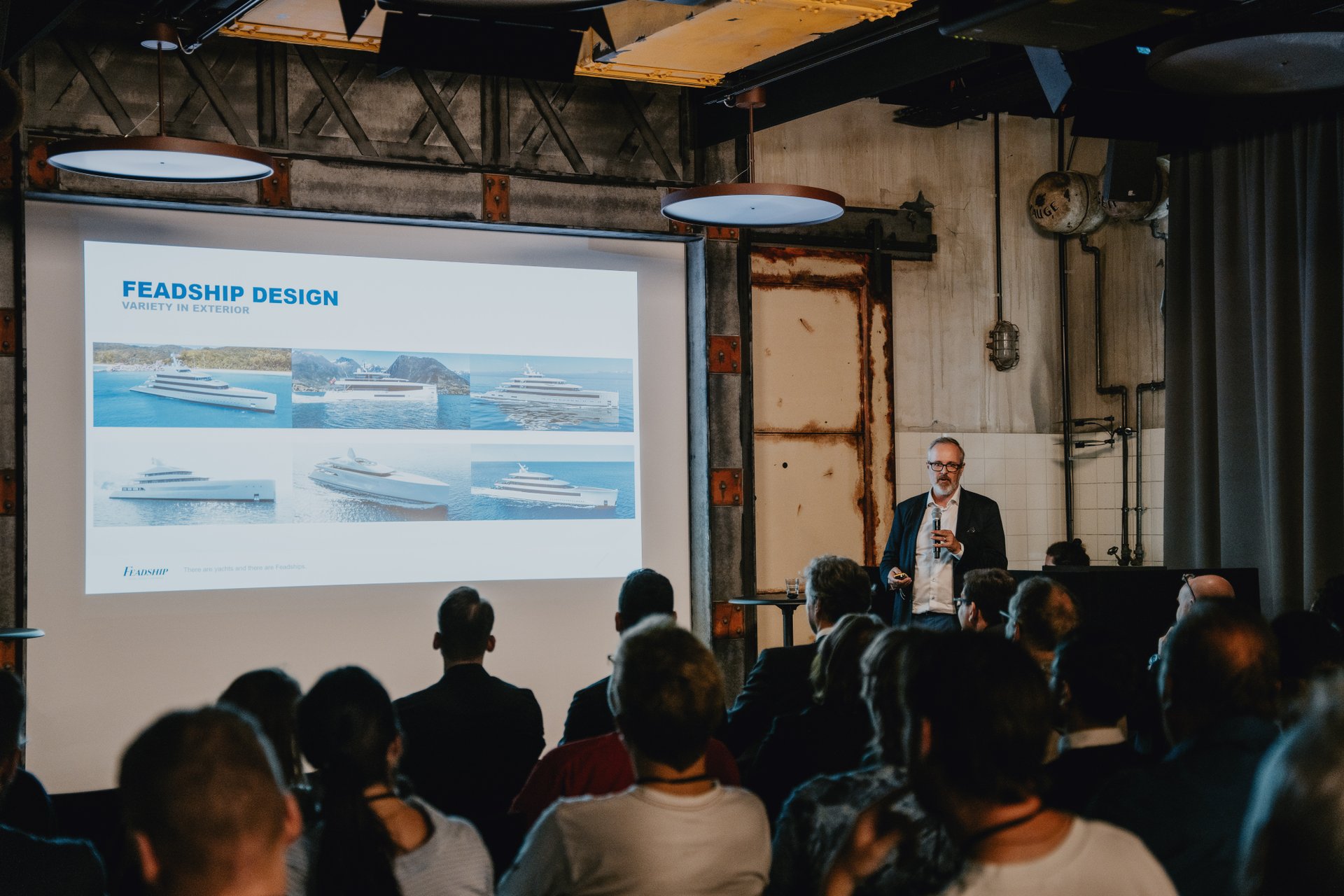

Freedom vs formula
One of the biggest contrasts between the automotive and nautical worlds is the creative freedom. In car design, even for high-end brands like Rolls-Royce and Aston Martin, designers are still working within strict parameters. Regulations, safety standards, mass production – these limit what’s possible. Some designers are responsible for one detail, like the cup holders in the backseat. It’s often multiple teams in different countries working on one car design.
Superyacht design, especially at Feadship, couldn’t be more different. Every yacht is a concept in itself. It’s not just bespoke – it’s a blank slate. We don’t build for a market; we build for an individual. However, we’re under pressure. One client, one delivery date, and we can’t afford to doodle forever. That time squeeze can be creative kryptonite. Automotive design, by contrast, benefits from phased development, clay modelling, and years of iterative prototyping – resources rarely afforded to even the most ambitious custom yachts. What can yacht designers learn from the car makers? Maybe how to explore more before committing. Sometimes we go too fast.
Automakers have another significant advantage over superyacht shipyards: they can actually build their concepts, and there were some fabulous examples on display in Munich. Concept cars are like creative playgrounds for the automotive world – prototypes built to showcase new technology, test public reaction and generate publicity. Unlike regular production models, they’re not typically intended for sale – though there are exceptions. Instead, they serve as experimental platforms where designers and engineers can explore bold ideas and spark public imagination without the constraints of production timelines or budgets.
Design language
I’m not a car fanatic by heart, but I appreciate their form, and especially the experience they offer. I remember visiting Rolls-Royce and Aston Martin as part of a group from Feadship. Each brand showcases a different philosophy of luxury. In a Rolls, silence is the experience, whereas in an Aston, it’s the sound and vibration of the engine – you feel it in your spine. Superyachts, of course, lean more toward the former. Silence is luxury at sea. But the goal is still the same: creating an emotional response through design.
I recently spent a day on a racetrack at Zandvoort during a Feadship brokers’ day, where discussions about the new BMW M5 led to reflections on the elusive art of blending aggression with approachability – not just in cars, but in yachts too. There’s something about the ‘face’ of a car. All cars have one – the grille, the headlights – that creates character. You don’t really get that on yachts, at least not from the bow. Yachts are recognized more easily from the side than the front. But that may be changing. Yacht designers are now borrowing cues once exclusive to automotive stylists: crease lines to add tension, chamfers to break surfaces, and stance – the way a boat visually "sits" on the water, much like how a car squats on its suspension.
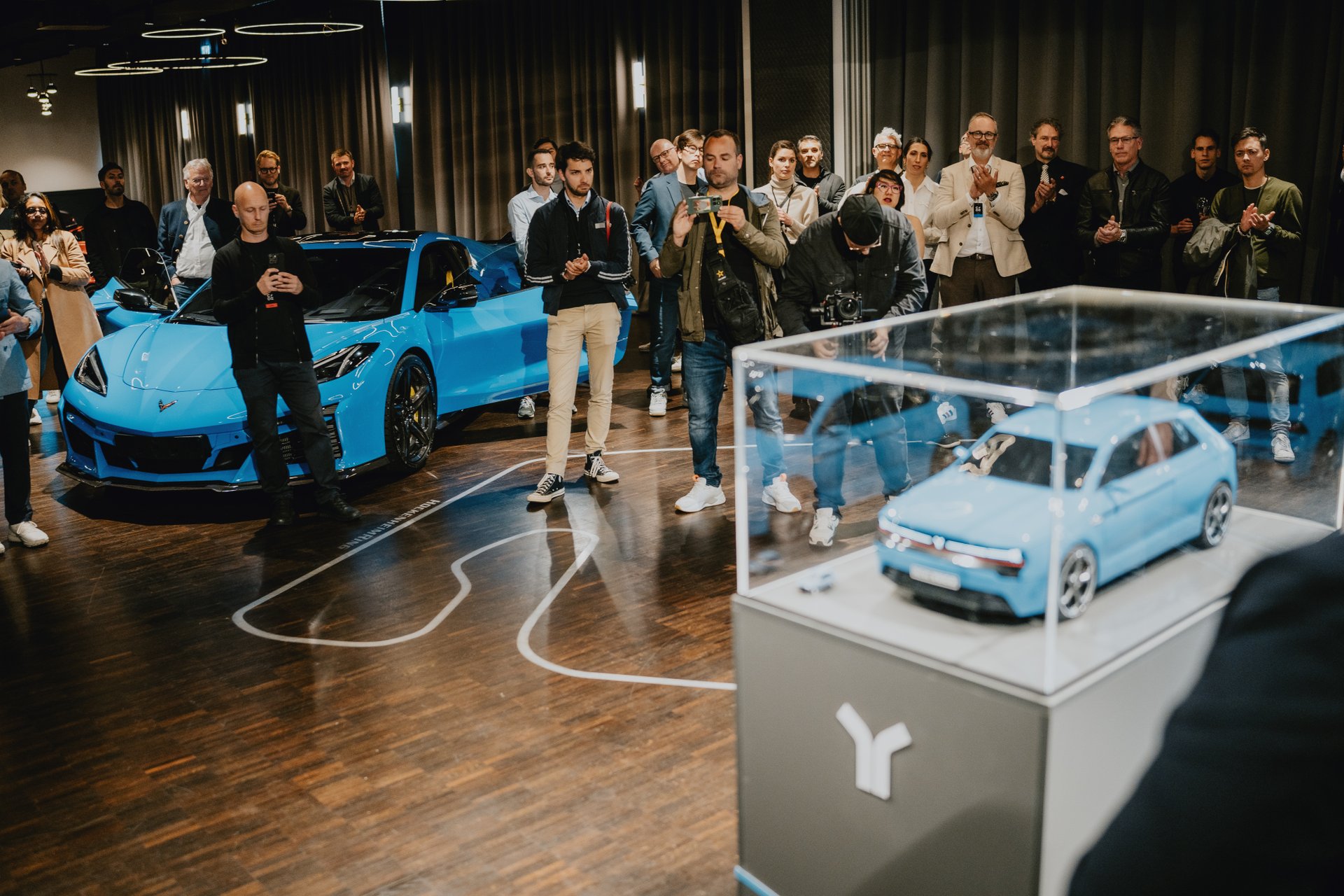

Lines matter
Somnium (hull 704) is a case in point. Designed by Studio De Voogt with a beautiful interior from FM Architettura, the project was inspired in part by Ferrari – its owner is a noted fan. The yacht hints at Italian automotive character without succumbing to cliché. Its aft design carries the bold shoulder of a GT car, while early renders flirted with Ferrari red before settling on a more nuanced palette. We were thinking in terms of feeling, not branding.
Lines matter. Whether they're taut and aggressive or soft and embracing, they communicate a yacht’s character – masculine, feminine, or somewhere in between. And increasingly, clients have strong preferences. Some favour a downward-raked foredeck, a visual metaphor for power and forward motion. Others want more femininity and visual softness. Whatever the preference, it’s the balance that defines the soul of a yacht.
At the end of the day, I came away from Munich feeling inspired. It was fascinating to be around other designers who are so passionate about what they do. We shared a language – of form, proportion, emotion – but the differences are what made it exciting. Ultimately, I see yacht design as the more unbounded discipline. We have to obey rules like the car makers, but we have the volume and scope to bend them. That’s the beauty of yacht design. It’s art, it’s engineering – and most importantly, it’s personal.”
As more collaborations blur the line between car and yacht design, it’s clear the dialogue between these two worlds will only grow. But for me at least, the sea still offers the ultimate creative playground.
